
Friday, January 1, 1943
On the Eastern Front... The Soviets reoccupy Velikiye Luki, northwest of Moscow, after brutal street fighting. In the continuing Soviet advance, Elista and Chikola are also liberated.
In New Guinea... Attacks on the Japanese positions at Buna continue. Some of the Japanese garrison withdraws.
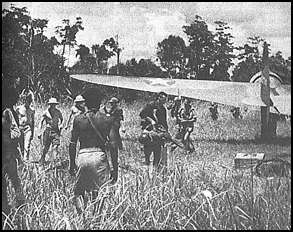
Saturday, January 2, 1943
In New Guinea... Japanese positions at Buna are stormed by troops from Eichelberger's US 1st Corps. Fighting continues around Sanananda.
In the Solomon Islands... On Guadalcanal, Americans mount another attack on Japanese held Mount Austen. Some progress is made. The Gifu strongpoint remains controlled by the Japanese.
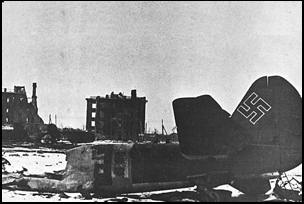
Sunday, January 3, 1943
On the Eastern Front... In the Caucasus, the Soviet offensive results in the capture of Mozdok and Malgobek by troops of the 58th and 44th Armies. In the Don basin, Army Group Don (Manstein) continues to resist Soviet attacks aimed at cutting off Army Group A (Kleist) in the Caucasus. The German 6th Army at Stalingrad continues to resist. The Luftwaffe is suffering substantial losses to its air transport fleet in the ongoing, though inadequate, attempt to supply the German army at Stalingrad.
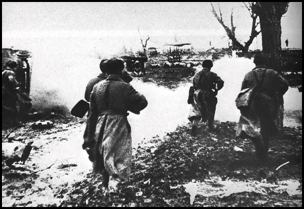
Monday, January 4, 1943
On the Eastern Front... In the Caucasus, the Soviets capture Nalchik. Chernyshkovskiy on the Chir River is also captured by Red Army troops.
In New Georgia... US Task Force 67, commanded by Admiral Ainsworth, bombards the Japanese base at Munda. A second group of cruisers and destroyers is in support of the effort. Proximity fuses for antiaircraft ammunition is used for the first time by one of the vessels involved in the bombardment.
Tuesday, January 5, 1943
In the Solomon Islands... On Guadalcanal the Japanese begin their planned withdrawal. US forces fail to take note of the evacuation. Japanese resistance on Mount Austen is maintained despite growing American pressure.
In Tunisia... British forces make small gains near Djebel Azzag, west of Mateur. The US 5th Army, under the command of General Clark, becomes operational.
On the Eastern Front... In the Caucasus the Soviets take Prokhladny. Red Army forces consolidate their gains farther north by taking Morozovsk and Tsimlyansk.
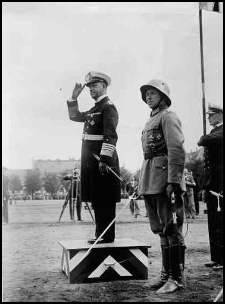
Wednesday, January 6, 1943
In Berlin... Grand Admiral Raeder resigns his position as Commander in Chief of the Kriegsmarine in the wake of the German failure against the convoy JW-51B (December 30-31).
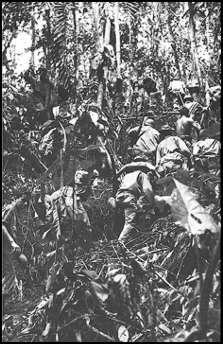
Thursday, January 7, 1943
In the Solomon Islands... On Guadalcanal, fresh American troops mount an assault on Mount Austen.
In New Guinea... A Japanese convoy lands supplies and reinforcements at Lea despite air attacks.
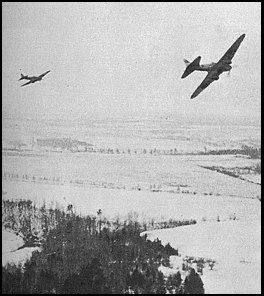
Friday, January 8, 1943
On the Eastern Front... Rokossovsky, commanding the Red Army's Don Front surrounding Stalingrad, and Voronov, the STAVKA representative, issue a demand to surrender to the German 6th Army. Paulus, commander of the encircled forces, refuses to surrender; his Chief of Staff, Schmidt, is believed to have influenced this decision. The German 6th Army at this point still has substantial manpower but it is short of supplies and the troops have been weakened by a lack of food and warmth. The Red Army forces are well provided with food, fuel and ammunition. Meanwhile, to the south, Zimovniki is captured in a Soviet attack.
On Madagascar... Administration of the island is handed over to the Free French.
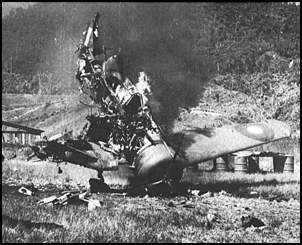
Saturday, January 9, 1943
In New Guinea... The Australian 17th Brigade is airlifted to Wau to establish a forward base for the next phase of the Allied offensive. Buna and Sanananda are still to be captured. The Americans capture the village of Tarakena but their attempts to advance further toward Sanananda are held by the Japanese defenders.
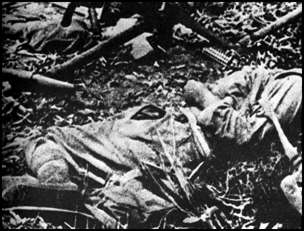
Sunday, January 10, 1943
In the Solomon Islands... On Guadalcanal, an new American offensive begins with heavy air and artillery bombardment. The Japanese-held Gifu strongpoint is attacked by the US 35th Infantry Regiment. The Americans have over 50,000 troops on the island; the Japanese have less than 15,000 ill-supplied troops defending. During the night eight Japanese destroyers attempt to deliver supplies. One of the destroyers is damaged by American PT boats.
On the Eastern Front... The Red Army launches an offensive aimed at reducing the Stalingrad pocket. The Soviet 62nd and 64th Armies to the east and southeast are notably under strength. The main forces engaged in the offensive are the Soviet 65th and 22nd Armies to the west. Forces of the German 6th Army are forced to retreat.
In New Guinea... American forces achieve limited gains toward Sanananda and near Tarakena.
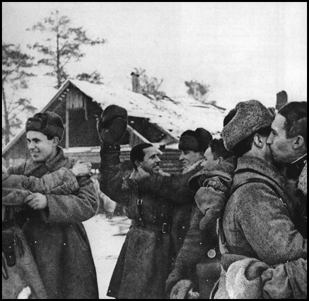
Monday, January 11, 1943
On the Eastern Front... The siege of Leningrad, in the north, is partially broken. A narrow land corridor is opened south of Lake Ladoga by coordinated attacks from the Leningrad garrison and the Soviet Volkhov Front. In the Caucasus, in the south of the front, Soviet forces occupy Georgivesk, Pyatigorsk and Mineralnye Vody. Slightly to the north, Kuberle, on the railroad line from Zimovniki to Proletarskaya, falls as well.
In the Solomon Islands... On Guadalcanal, US forces take the "Sea Horse" position. The Japanese Gifu strongpoint continues to resist American pressure.
Tuesday, January 12, 1943
On the Eastern Front... The Soviet Voronezh Front (General Golikov) and Bryansk Front (General Reiter) attack the Hungarian 2nd Army and the German 2nd Army, respectively. The Hungarian defenses are quickly shattered. Soviet forces breaking through drive toward Kharkov. To the south, Army Group Don (Field Marshal Manstein) is also being pressured by Soviet attacks aimed at reaching Rostov and cutting off German Army Group A in the Caucasus. The Soviet breakthrough to the north represents a threat to the position of Manstein's army group.
In the Aleutian Islands... Amchitka Island is occupied by a small US force led by General Jones. The destroyer Warden is lost in an accident.
In New Guinea... Australian infantry and tanks attack Japanese positions north and west of Gona.
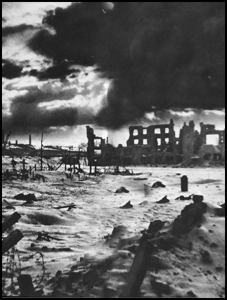
Wednesday, January 13, 1943
On the Eastern Front... Soviet attacks in Stalingrad reach the Rossashka River late in the day.
In the Solomon Islands... On Guadalcanal, the American offensive widens with advances westward along the north coast as well as attacking parallel to this, further inland.
In New Guinea... General Eichelberger, an American, is given overall command of the fighting troops.
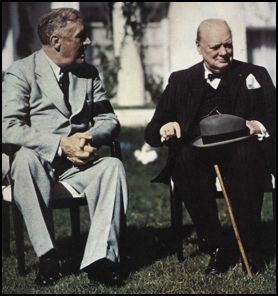
Thursday, January 14, 1943
In Morocco... The Casablanca Conference. Churchill and Roosevelt, accompanied by their Chiefs of Staff, meet to discuss Allied strategy. Americans believe the British are not doing enough in the war in the Pacific while the British believe the Americans are lacking commitment to the agreed upon "Germany-first" strategy.
In North Africa... The personnel of the 21st Panzer Division are withdrawn from Rommel's defensive line and sent to Gabes to re-equip. They are to be used to defend Tunisia from the western attack.
On the Eastern Front... In Stalingrad, Red Army forces capture Pitomnik airfield, which has been used by the Luftwaffe to supply the 6th Army. Soviet forces are advancing past the Chervlennaya and Rossoshka rivers. To the northwest, forces of the Soviet Voronezh Front continue to advance.
In the Solomon Islands... A small number of Japanese reinforcements land near Cape Esperance to prepare positions to cover the planned evacuation.
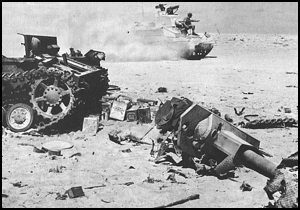
Friday, January 15, 1943
In North Africa... Montgomery launches a new offensive. The Axis defenders are forced to retreat from the Buerat position.
In Morocco... The Casablanca Conference. The Anglo-American strategy discussions continue.
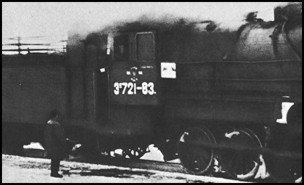
Saturday, January 16, 1943
On the Eastern Front... In the Caucasus, Army Group A (Kleist) is withdrawing under pressure. Army Group Don (Manstein) continues to defend Army Group A's line of communication around Rostov. In the north, the Soviets attempt to widen the supply route to Leningrad which is presently no wider than 6 miles and exposed to German fire. The area becomes known as the "corridor of death." Meanwhile, at Stalingrad the German 6th Army pocket has been reduced to about 250 square miles, about half the area it controlled five days ago.
In the Solomon Islands... On Guadalcanal, American forces advance west and southwest of their perimeter. Japanese positions overlooking the upper part of the Matanikau River are captured.
In New Guinea... In converging attacks near Sanananda, the US 163rd Infantry Regiment and the Australian 18th Brigade are making progress.
In Morocco... The Casablanca Conference. The Anglo-American strategy discussions continue.
Sunday, January 17, 1943
On the Eastern Front... There are Soviet advances from Orel to the Caucasus. Millerovo and Zimoviki are captured. Around Stalingrad, there is a lull in the fighting as the Red Army forces regroup for a final offensive.
In New Guinea... The Australians penetrate Japanese positions at Sanananda. Japanese resistance continues here and against the converging Americans attacking at Giruwa.
In Morocco... The Casablanca Conference. The Anglo-American strategy discussions continue.
Monday, January 18, 1943
In Tunisia... German Tiger I tanks are used for the first in this theater at Bou Arada. Neither the British nor the American forces have anything comparable.
On the Eastern Front... Red Army clears the supply corridor into Leningrad but it is unable to widen it. In the Caucasus, the Soviets take Cherkessk and Divnoe (70 miles east of Elista).
In Burma... The British 14th Indian Division attacks Japanese positions at Donbaik in the Arakan. The assault is unsuccessful.
In the Aleutian Islands... Two American cruisers and four destroyers bombard Japanese-held Attu Island (January 18-19).
In Morocco... The Casablanca Conference. The Anglo-American strategy discussions continue.
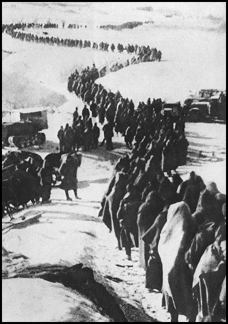
Tuesday, January 19, 1943
On the Eastern Front... The Soviet Voronezh Front continues to make rapid progress toward Kharkov. Valuyki and Urazavo are captured. In the rear of the advance, a pocket of Hungarian troops is driven from Ostrogozhsk. The Soviets have taken more than 50,000 Axis prisoners in this drive. Only 2500 are Germans.
In New Guinea... Japanese General Yamagata orders his troops to pull out of Sanananda. Heavy fighting continues.
In North Africa... The British 8th Army's offensive continues. Tarhuna is captured and the Axis defensive line between here and the Mediterranean is outflanked.
In Morocco... The Casablanca Conference. The Anglo-American strategy discussions continue.
Wednesday, January 20, 1943
On the Eastern Front... German Army Group A, in the Caucasus, continues its withdrawal under Soviet pressure. The Red Army takes Nevinnomyssk and Proletarskaya.
In the Solomon Islands.. On Guadalcanal, Japanese resistance on Mount Austen weakens. Likewise, the Japanese Gifu strongpoint has suffered heavily from artillery fire.
In North Africa... Elements of the British 51st Highland Division occupy Homs as the Axis forces fall back.
In Morocco... The Casablanca Conference. The Anglo-American strategy discussions continue.
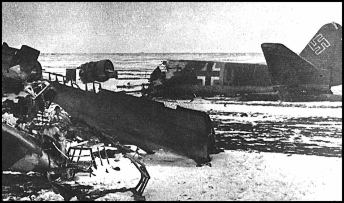
Thursday, January 21, 1943
On the Eastern Front... Soviet forces at Stalingrad capture Gumrak Airport. The German 6th Army, in Stalingrad, is now completely isolated. Meanwhile, the Red Army takes Voroshilovsk between Stavropol and Armavir.
From Morocco... The Casablanca Conference: the Anglo-American strategy discussions continue. . A joint Anglo-American statement on strategic bombing is issued to British and US bomber forces in Europe (the Casablanca Directive). The priorities reflect US thinking about precision bombing. The RAF Bomber Command will continue its policy of area bombing.
In New Guinea... Japanese resistance at Sanananda and Giruwa wanes. There are only isolated pockets of Japanese remaining.
Friday, January 22, 1943
On the Eastern Front... The final Red Army offensive against the German 6th Army trapped in Stalingrad begins with a massive artillery barrage followed by infantry attacks. In the Caucasus, Salsk falls to the advance Soviet forces.
In the Solomon Islands... On Guadalcanal, American attacks are renewed. There is progress toward Kokumbona.
In North Africa... Axis forces abandon Tripoli after evacuating large quantities of supplies and destroying port installations.
In New Guinea... The last Japanese troops are eliminated from Papua. The Japanese have suffered about 7000 killed during the campaign, the Allies about 3500.
In Morocco... The Casablanca Conference. The Anglo-American strategy discussions continue.
Saturday, January 23, 1943
On the Eastern Front... Soviet General Golikov's Voronezh Front try to widen the advance northward by attacking the city of Voronezh. In the Caucasus, the Red Army captures Armavir.
In North Africa... The 8th Army occupies Tripoli. The repairs to the port facilities begin immediately and are completed by the end of the month.
In the Solomon Islands... On Guadalcanal, American forces begin to make rapid gains because of the Japanese withdrawal toward the Cape Esperance positions. The Americans fail to realize the significance. The Gifu strongpoint falls.
In Morocco... The Casablanca Conference. The Anglo-American strategy discussions continue.
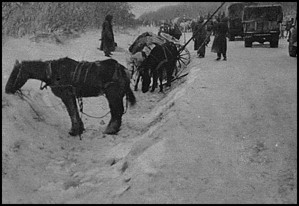
Sunday, January 24, 1943
On the Eastern Front... Vatutin's Southwest Front captures Starobelsk. The survival of German Army Group A is no longer threatened, as its retreat out of the Caucasus continues.
From Berlin... Hitler refuses a request by Field Marshal Manstein to order Paulus, commanding the trapped 6th Army at Stalingrad, to surrender.
In the Solomon Islands... A US naval task force attacks Kolombangara Island in the New Georgia group of islands. On Guadalcanal, American forces push west of Kokumbona.
In Morocco... The Casablanca Conference. The conference concludes. The Allied differences have been resolved by the Chiefs of Staff. The war against the U-boats and supplies for the USSR are to have priority. Preparations for a landing in western Europe are to proceed. Offensive operations in the Pacific are also to continue as is the campaign in Tunisia and North Africa. The forces in North Africa will proceed to Sicily and Italy following the completion of the North African campaign. At a press conference, Roosevelt states that the Allies are seeking the "unconditional surrender" of Germany, Italy and Japan. Churchill endorses this position.
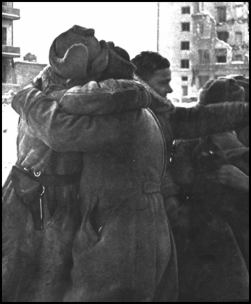
Monday, January 25, 1943
On the Eastern Front... Attacking Soviet forces meet in the middle of Stalingrad. The forces of the German 6th Army are now split into two pockets, holding about 36 square miles of territory in total. To the northwest, Voronezh is captured by Soviet troops.
In Tunisia... American forces advance to Maknassy, threatening Sfax and Gabes.
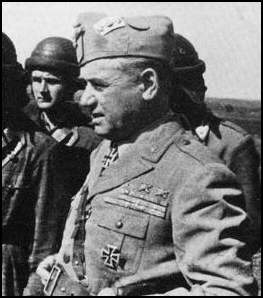
Tuesday, January 26, 1943
In North Africa... After quarrels with the Italian High Command, to whom he is responsible, Rommel is told he is to be relieved by the Italian General Messe. Rommel does not relinquish authority at this time.

Wednesday, January 27, 1943
Over Germany... The first USAAF raid over a German target is carried out. A total of 55 American bombers raid Wilhelmshaven, losing 3 bombers and claiming 22 German planes shot down. The results reinforce American beliefs about the ability of American B-17 and B-24 bombers to carry out unescorted daytime precision bombing runs over Germany.

Thursday, January 28, 1943
In New Guinea... The Japanese unsuccessfully attack a detachment of the Australian 3rd Division at Wau.
On the Eastern Front... The Soviets take Kastornoye, east of Voronezh. A detachment of the German 2nd Army is cut off near here.
From Berlin... The German Director-General of Labor, Sauckel, issues a decree for the further mobilization of civilian men and women.
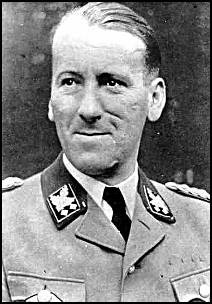
Friday, January 29, 1943
In Berlin... Austrian Ernst Kaltenbrunner is appointed to head the SD, replacing Heydrich.
On the Eastern Front... The Soviets continue to advance. Kropotkin in the Caucasus and Novyy Oskol north of Valuyki are captured.
In the Solomon Islands... US Task Force 18, under the command of Admiral Giffen, is attacked by Japanese aircraft off Rennel Island while providing covering escort to a supply operation to Guadalcanal. The heavy cruiser Chicago is sunk.

Saturday, January 30, 1943
On the Eastern Front... The Soviets take Tikhoretsk in the Caucasus and clear the Maykp oilfields. The German 17th Army, part of Army Group A, is in the Kuban Peninsula and it is becoming separated from the 1st Panzer Army which is retreating toward Rostov. In Stalingrad, the Soviets find the headquarters of General Paulus in the southern pocket.
From Berlin... General Paulus, commanding 6th Army at Stalingrad, is promoted to Field Marshal. Admiral Donetz is appointed to the position of Commander in Chief of the German navy.
In Berlin... It is the tenth anniversary of the NSDAP regime and it is marked by speeches by Goebbels and Goring. The RAF mount their first daylight raid over Berlin with a group of Mosquito bombers. The raid is timed to conincide with the speeches.
In the Solomon Islands... On Guadalcanal American forces continue to advance against Japanese resistance. There is heavy fighting along the River Bonegi.
In Vichy France... The secret police modelled on the Nazi German Gestapo is formed. Its commander is Joseph Darnand.
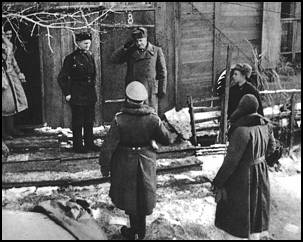
Sunday, January 31, 1943
On the Eastern Front... Field Marshal Paulus surrenders himself and the southern pocket of 6th Army in Stalingrad. The northern pocket under the command of General Strecker continues to resist.
In Rome... Marshal Cavallero resigns and General Ambrosio takes over as Chief of the Italian General Staff.
Copyright © 2018 Ralph Zuljan
